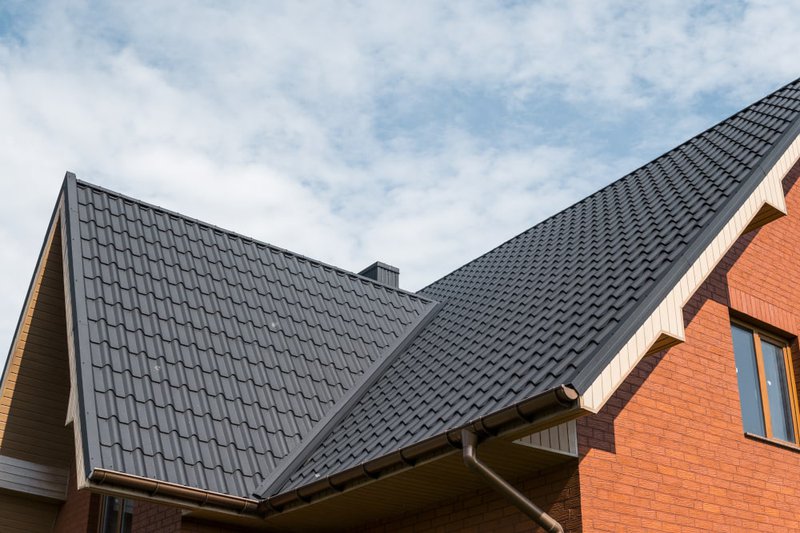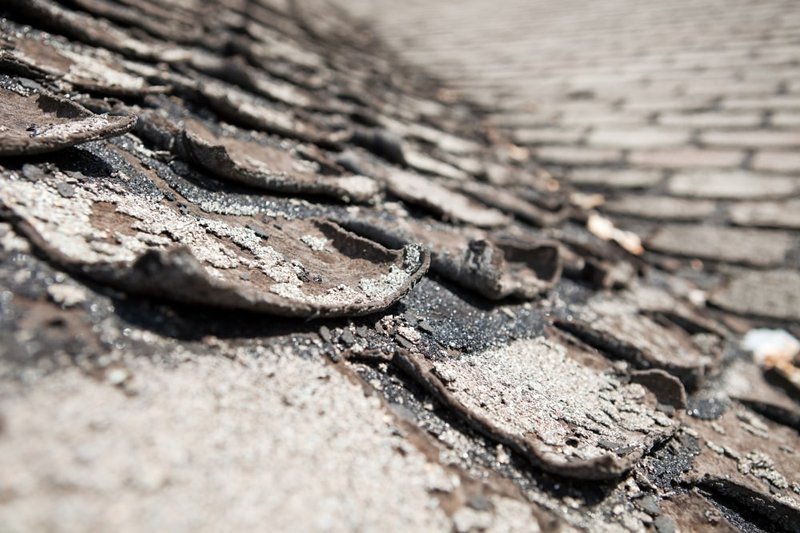
Along with the floors and walls, the roof is one of the most important and fundamental components of any building. But it's also something that few people think about until something goes wrong and they find themselves contacting roofing contractors for roof repair. But roofs are actually quite complex structures with important purposes.
There are many different roof types and roof styles, along with various roofing materials, from aluminum roofing to PVC roofing. There are also various different parts of a roof that it can be important to know about, from roof shingles to roof eaves, roof gutter, and roof insulation too. This guide will cover all you need to know about roofs, including functions, types, materials, and parts.
What Is a Roof?
Before we start looking at the more in-depth aspects of roofs, such as roof vents, the various types of roof shingles, and the pros and cons of certain roof materials like EPDM roofing or an asphalt roof, let's begin with a simple definition and a clear answer to the question of “What is a roof?”
A roof is the top part of a building, including all the various components and materials to support it. As stated in the introduction, roofs can come in various forms. You might see one building with a flat roof and another with a pitched house roof.
They can also be found in different materials, like steel roofing or asphalt shingle roof, and roof design can vary a lot as well. So the term “roof” is a broad one but can apply to any coverings or top sections of buildings, positioned above the walls and stretching across to cover the top of the structure.
The term roof can also be applied beyond the world of houses and commercial buildings. Cars also have roofs, for example, which is why we talk about roof rack and rooftop tent products for automobiles. Sheds, greenhouses, and garages can have roofs too.
What Are the Functions of a Roof?

Now we know what a roof is, so what is the purpose or function of a roof? Well, there are several functions of a roof, but the main one is to shelter the interior of a building (and the people on the inside) from the elements of the outside world. In other words, a roof exists to serve as a protective barrier against rain, snow, and wind.
Roofs can also provide insulation, helping to preserve temperatures on the insides of the buildings and allowing them to stay cool in summer and warm in winter. They also complete the structure of a home or building, connecting the walls on either side from above and giving a building its final shape, while also protecting it against damages as time goes by.
What Does a Roof Consist of? Common Roof Components

As stated earlier, there are lots of different types and designs of roofs to take into account. Some types of roofs have certain parts, and other types of roofs have different parts. Listing all of those parts could take a long time, so in this section, we'll just focus on the most common roof components that the average homeowner should know about.
- Shingles - Shingles are a very common feature found on many roofs. They can be made of different materials. They serve as a type of roof covering, with each shingle usually being a flat, rectangular piece of material, and many shingles or roof panels being laid across the sheathing and rafters of the roof to provide exterior protection against the elements.
- Sheathing - If you were to lift the shingles up on the average roof, you'd usually find sheathing underneath. This is also known as the roof deck. The sheathing is usually made of wood and is nailed to the rafters, with shingles being applied on top of it. It provides an extra layer of protection and a foundation for the shingles to be installed.
- Rafters - The rafters of a roof are the slats inside the building that support the sheathing and shingles above. You can think of them as being the frame or skeleton of the roof, and they're usually made of metal or wood.
- Underlayment - Underlayment is made from a water-resistant material and is usually positioned over the sheathing, giving it some extra protection against rain and moisture. This can be a good option when trying to minimize the risk of a leaking roof and roof leak repair costs.
- Flashing - Flashing is another protective element of a roof, typically made from metal and positioned along joints to protect against water damage.
- Ridge - The ridge of a roof is the line along the edge where two sloping sections of the roof meet.
- Valley - A valley is the point of the roof where two downward-sloping sections meet. These areas can be particularly prone to waterlog and damage, so need to be very strong.
- Gutters - Gutters are typically positioned along the edges of the roof, used for draining water off the roof and away from the home.
- Eaves - The eaves are the lower edge of the roof, typically extending beyond the edge of the wall.
- Fascia - The fascia is the board situated behind the gutter and the eaves.
What Are the Different Roofing Materials?

There are many different materials that can be used to make roofs, each with its own pros and cons. The list below will cover some of the most common roof materials used today:
- Asphalt - Asphalt is a cheap and lightweight material used for roof shingles. Asphalt roofs can come in various colors and stand up well to hail and rain, but individual shingles can get cracked or even blow away in storms.
- Metal - When it comes to metal roofing, there are various forms of metal roofing sheets to consider, such as aluminum and steel roof sheets. Metal roof costs can vary depending on the type of metal used and the metal roofing suppliers you contact. Metal is strong and sturdy, and metal roof installation is usually quite simple, but metal roofs can be more expensive to maintain and repair.
- Slate - Slate is a popular and traditional material used for making shingles. It's a very beautiful and sturdy material that can add value to a home. However, slate roofs can be more prone to certain issues, such as ice damming, which is when build-ups of ice gather on the roof and meltdown, possibly causing leaks and rot damage.
- Composite - Composite often appears in lists of flat roof materials. It's made from a blend of asphalt and fiberglass and is known for its strength and flexibility. This type of roof is good for withstanding different weather conditions, but can still be damaged and lead to leaks and other problems that require the services of a roofing company, like roof moss removal.
What Are Some Different Roof Types?
There is also a wide range of roof types, including:
- Flat roof - A flat roof, as the name implies, is completely flat, without any notable slope. These roofs are common on commercial buildings and apartment buildings.
- Gable roof - A gable roof is one that comes to a peak at the top, with two sloping sides, forming a triangle-like shape.
- Hipped roof - A hipped roof is one in which the roof extends out to all four sides, rather than just the front and back.
- A-Frame roof - An A-frame roof is one with very steep pitches, with the roof extending all the way down to the ground on each side of the building.
- Mansard roof - Mansard roofs are a variety of hipped roof that has a change in pitch about halfway along the slopes on each side.
What Can Go Wrong with Roofs? Roof Repair 101

There are many potential problems that can arise with your roof due to storms, rain, wind, falling items like tree branches, and other damages. Examples include:
- Cracked, broken, or missing shingles
- Roof vent damage
- Leaking roof
- Holes in the roof
- Damage to the flashing
- Dormer damage
- Skylight damage
- Snow or ice build-ups
- Hail damage
- Valley damage
- Fascia damage
- Sagging roof
- Damaged eaves
When damage occurs to your roof, you'll need to contact an expert roofing company in your area to get repairs as soon as possible.
Frequently Asked Questions about Roofing

How long do roofs last?
This depends on the material used to make them, as well as other factors like how well-maintained they are. The ideal roofing lifespan is 50 years or more, but those made of weaker materials will only last around 20-30 years.
What are some warning signs of roof damage?
You may need to contact roofing companies for roof repair if you notice sagging sections, cracked or missing shingles, worn roof covers, bubbling in the roof covers, gaps or damages to the flashing, and so on.
Should I repair or replace a roof?
This depends on several factors, like age, cost, and damage. If the roof is very old, seriously damaged, or damaged regularly and expensive to maintain, it might be time for roof replacement, but the roof replacement cost is usually quite high, so you need to make sure you can afford it. If the roof is younger and has a good structure and frame, it should be repaired.
What is the best type of roof?
There's no one “best” type of roof. There are many types out there, from interlock roofing to corrugated roofing, advanced roofing, and so on. All types and materials have their pros and cons. It's wise to speak with roofing supply experts from a trusted Canadian roofing company to find out more.
How much does roof repair cost?
It depends on many factors, like the materials and the type of damage. A simple composite flat roof repair could cost just $3-$5 per square foot, but more expensive jobs can add up to hundreds or even thousands. It's important to find the best roofing company to meet your needs when you need roof repairs.
How to shingle a roof?
When it comes to installing shingles or setting up roofs in general, it's always best to turn to commercial roofing professionals at your local Canada roofing supply store or repair company. They'll have all the necessary tools, like roofing shovels, as well as the experience and know-how needed to carry out roof installation and repair jobs.
When should I get a roof inspection?
Experts recommend having a roof inspection once a year to check for any signs of damage, or after bad storms when you suspect damage may have occurred.





